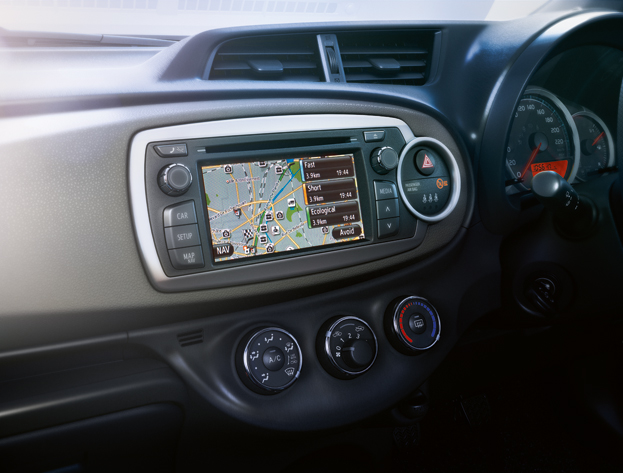Just like any other sector of the tech industry, car navigation systems are evolving. Ten years ago a GPS was a luxury, but nowadays virtually everybody has access to one via a smart phone or tablet. Simple car navigation systems are a thing of the past and now manufacturers have to come up with new and exciting devices that can complete with the mobile world.
In recent years in-car navigation systems have integrated with various other functions, allowing them to connect with the Internet and other external devices. This is partly due to the increasing popularity and convenience of using other digital systems such as tablets and smart phones.
A new generation of multimedia system
The good news for GPS manufacturers is that the widespread popularity of tablets and smartphones has paved the way for more intricate and technologically advanced in-car multimedia systems. Some manufacturers are even working alongside the likes of Apple and BlackBerry to develop new technologies that can be implemented into brand specific models.
2014 has already seen a string of upcoming systems hit the market; some of which have gained significant widespread appeal, such as the Kenwood Electronics DNX521DAB. This Volkswagen specific model provides everything that a smart phone or tablet can, but at a mere fraction of the cost.
The new generation of multimedia systems are no longer navigation focused; they’re entertainment systems that boast better GPS standards; video and audio playback; hands free activation; and even connection to various app stores, such as iTunes and Google Play. In fact, navigation itself has almost taken a backseat and consumers will often focus more on a device’s other features than the quality of the GPS.
Standard features of 2014
Without certain features, it’s unlikely that any multimedia system will be able to compete in today’s highly competitive mobile market. Devices are expected to provide everything from audio and video playback to instant traffic and roadwork updates. The addition of a CD/DVD player simply won’t cut it.
Many of the multimedia systems that have been developed for 2014 are already starting to accommodate the changes. Most of them now have full HD capabilities, blu ray players and HDMI connection ports, providing an in-car cinema system that can almost compete with a home setup. In addition, hard drives and a constant Internet connection make it possible to download music and movies while on the move.
One of the features that most devices have in common, however, is the addition of microSD card slots. This allows users to seamlessly transfer data between different computing devices such as laptops and PCs – including downloaded music and video files. Multimedia systems that support a wider selection of format types have now solidified their position in this ever changing industry, and will ensure that they don’t go out of date too quickly; which was a common issue among devices that only supported CD/DVD playback in the past.
Hands free activation and navigation
The way drivers control GPS systems has always been a controversial topic. It’s illegal for drivers to take their hands off the wheel to activate and find directions on a navigation system, yet many drivers break the rules. Because GPS systems aren’t always too reliable in terms of traffic updates and roadworks, this has often led to problems.
Virtually all of the current generation of multimedia systems have in-built Bluetooth capabilities and voice recognition software, which allows drivers to completely control their navigation and media playback without taking their hands off the wheel. This not only increases safety on the roads, but prevents criminal charges and reduces road related stress. Some of the more advanced systems, such as the Toyota Touch and Go, provide more than merely hands free navigation and media playback, and allow users to even write and send emails.
Conclusion
As in-car multimedia systems become more and more advanced, they are finally starting to catch up with the mobile generation. Because their prices are generally cheaper than tablets and smart phones, their popularity could potentially soar throughout 2014.
Image Credit:Toyota
Image Caption: Most of 2014’s new multimedia systems are 100% hands free.

